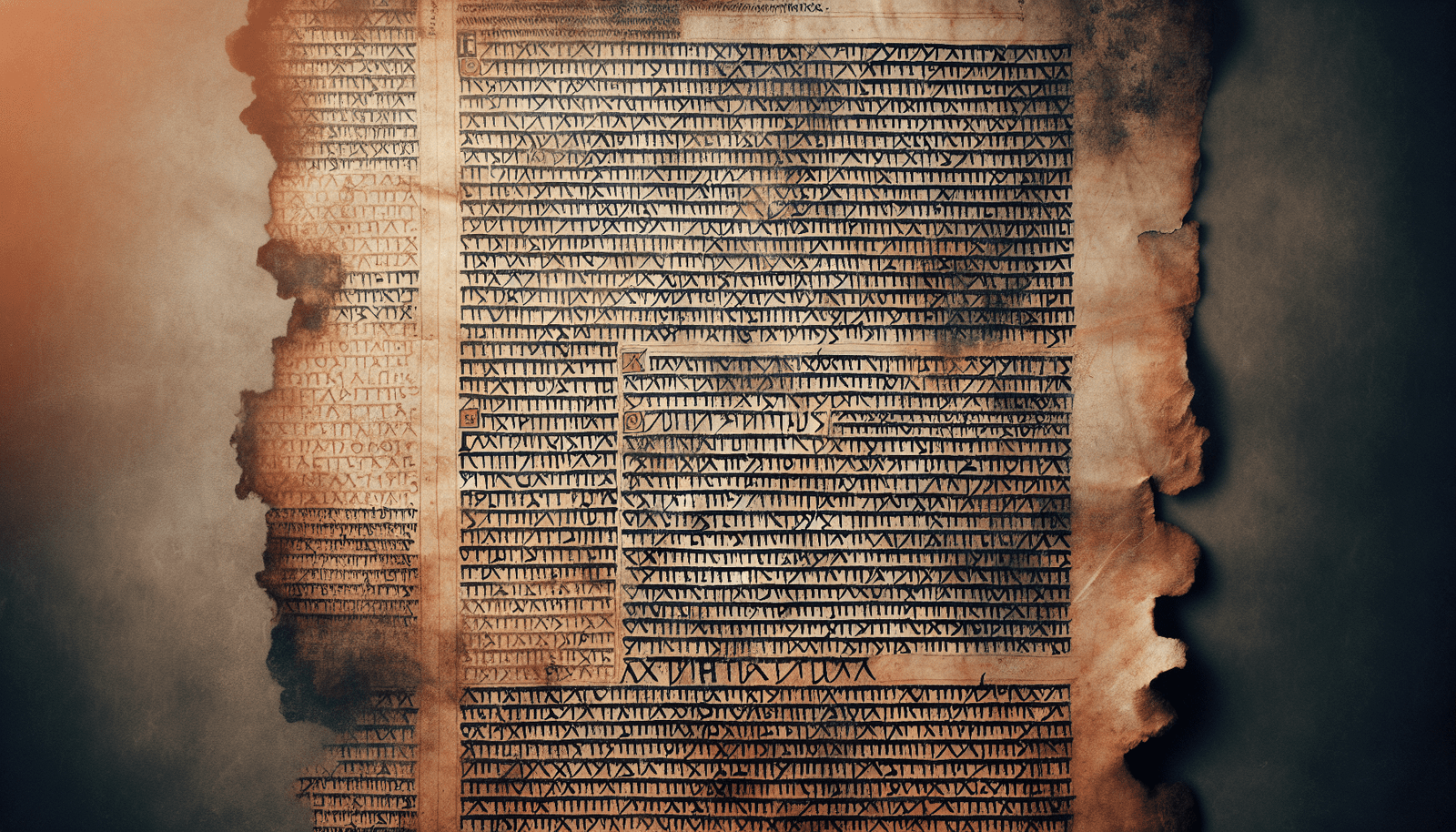Ironically, the mystery surrounding the Bible's origin often raises eyebrows among scholars and believers alike. Many ponder the complexities of its inception, contemplating the intricate web of historical, cultural, and divine influences that shaped this revered text.
As the investigation into the Bible's beginnings unfolds, intriguing revelations surface, shedding light on the enigmatic path that led to its creation. The intricate tapestry of events and motivations that contributed to the Bible's genesis invites a deeper exploration into its profound significance, leaving enthusiasts captivated by the tale of its origin.
Origins of the Bible
The Bible's origins can be traced back to the Old Covenant, recounting the Israelites' journey from Egypt to Canaan. The Old Agreement, also known as the Hebrew Scripture, was originally written in Hebrew, with some portions in Aramaic. Dating back to the early centuries, the Bible holds a significant place in the history of humanity, shaping cultures and beliefs worldwide.
Authorship of the Bible has been traditionally attributed to various figures, with Moses often credited with writing the first five books, which form the Pentateuch. However, the compilation timeline and authorship of other books remain subjects of scholarly debate. The New Agreement, which complements the Old Agreement, includes accounts of the life and teachings of Jesus Christ and the early Christian Church.
Scholars analyze the historical accuracy of the Bible, exploring its accounts in the context of archaeological findings and ancient texts. The Zayit Stone, dating back to around 1000 BC, with early Hebrew script, contributes to the discussions on the Bible's origins. The complexities surrounding the Bible's authorship, compilation, and historical context add layers to its rich tapestry, inviting ongoing exploration and study into its origins and development.
Ancient Roots of the Bible
Having ancient origins rooted in Hebrew texts, the Bible traces the early history of the Israelites' journey from Egypt to Canaan. The ancient roots of the Bible are evident through various archaeological findings and historical documents. Key points to contemplate regarding the ancient origins of the Bible include:
- Authorship and the Pentateuch: Traditionally, Moses is credited with writing the first five books of the Bible, collectively known as the Pentateuch. This attribution has been a subject of scholarly discussion, with some researchers exploring multiple authorship theories over time.
- Development of the Old Covenant: The Old Covenant, comprising numerous books, evolved over centuries, with the process of compilation and editing unfolding gradually. Scholars continue to debate the timeline of its compilation and the various contributors involved in shaping its content.
- Historical Accuracy and Archaeological Correlations: The Bible's historical accuracy is a point of interest among scholars, with archaeological discoveries sometimes providing evidence that aligns with the biblical narratives. These findings contribute to the ongoing scholarly discussions surrounding the historical reliability and origins of the Bible.
Biblical Compilation Theories
Biblical Compilation Theories explore the diverse origins of the Bible through various scholarly hypotheses. The Documentary Hypothesis suggests that the Pentateuch, the first five books of the Bible, was compiled from multiple sources by different authors. It posits that these sources, labeled as J, E, P, and D, were later combined to form the Pentateuch as it exists today. In contrast, the Supplementary Hypothesis proposes that later editors added supplementary material to existing texts in the Bible to enhance or clarify the original content.
On the other hand, the Fragmentary Hypothesis theorizes that the Bible's compilation was a result of fragments pieced together over time, with various authors and editors contributing to its formation. This hypothesis highlights a more gradual and fragmented process of Bible formation. Additionally, the Process Theory suggests a continuous evolution of the Bible through additions, revisions, and compilations over an extended period.
These theories offer insight into the complex and multi-layered nature of how the Bible was compiled, shedding light on the diverse sources, authors, and editors involved in its formation. The examination of these hypotheses provides a deeper understanding of the intricate processes that contributed to the compilation of the Bible as a sacred text.
Evolution of the Bible
Throughout centuries of religious and historical development, the Bible has undergone a significant evolution in its content and structure. This evolution can be traced through key milestones:
- Hebrew Bible Formation: The Old Testament, which traces events from creation to the Jews' exile in Babylon, saw significant developments during the reign of King Josiah in the 6th century B.C. It took over 200 years under the Persian Empire to reach its final form, solidifying its content and structure.
- New Testament Development: The New Covenant, consisting of 27 Greek-written books including the Gospels, was composed approximately 40 years after the earliest Christian materials. This collection of texts played a critical role in shaping the early Christian community.
- Canon Formation through Councils: The process of forming the biblical canon was a complex one guided by councils in the 4th century. By the 5th century, there was a basic agreement on the accepted texts, marking a significant milestone in the standardization of the Bible. These councils played a crucial role in determining which books would be included in the Bible, shaping its current form.
Journey to Religious Text
The evolution of the Bible from ancient oral traditions and early Hebrew manuscripts marks a profound journey to becoming a revered religious text. The Old Covenant took shape over centuries, with its roots embedded in early Hebrew manuscripts and oral tradition. On the other hand, the New Covenant, consisting of 27 books written in Greek, including the Gospels about Jesus, emerged within the early church community. The formation of the biblical canon, which included both the Old and New Covenant books, was solidified through Councils in the 4th and 5th centuries. These Councils played a significant role in establishing a basic agreement on which texts should be considered sacred and included in the Bible. The Greek translation of the Hebrew Bible, known as the Septuagint, dating back to the 3rd century B.C., also played an essential role in shaping early Christian interpretations of the scriptures.
| Keywords | Description |
|---|---|
| Old Covenant | Took shape under the Persian Empire |
| New Covenant | Consists of 27 books written in Greek |
| Written | Both Old and New Covenant books were written |
| Early Church | Emerged within the early church community |
| Hebrew Manuscripts | Roots embedded in early Hebrew manuscripts and oral tradition |



